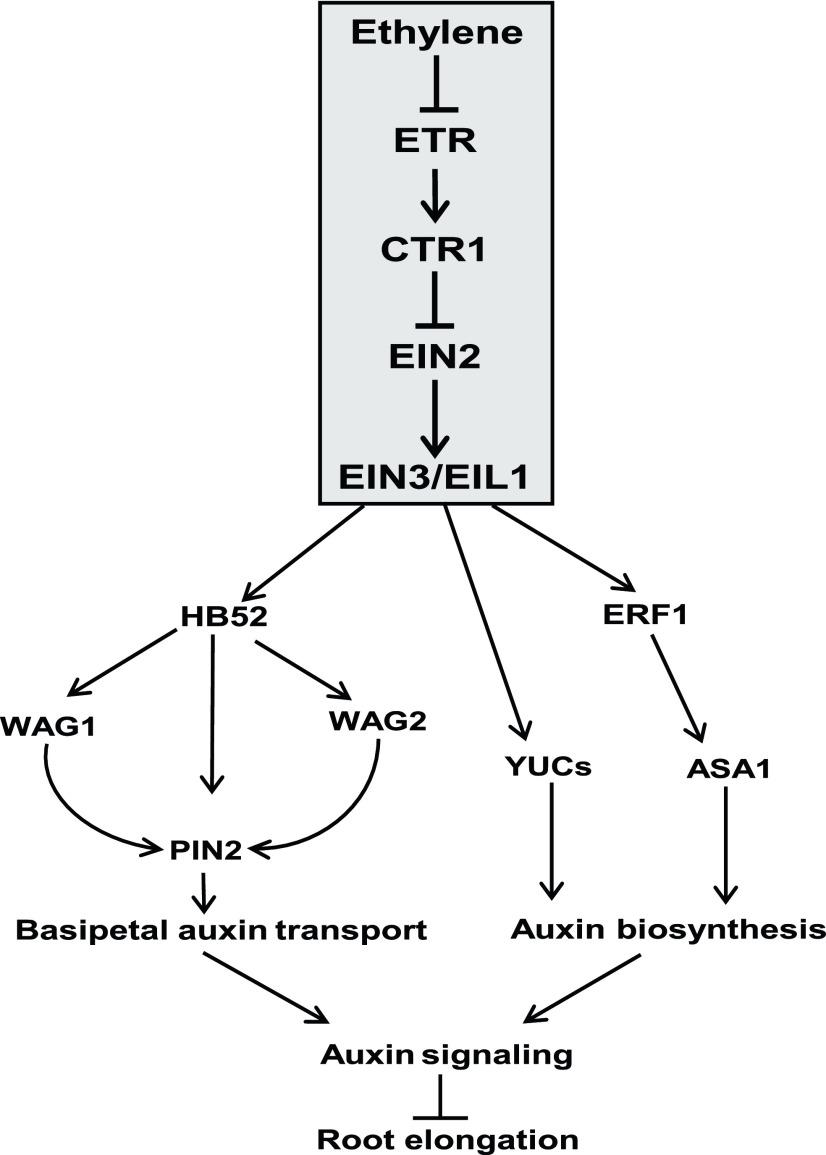Figure 10.
Model for the Role of HB52 in Mediating the Crosstalk between Ethylene Signaling and Auxin Transport during Primary Root Elongation.
HB52 is a downstream target of the ethylene signaling pathway. When ethylene is produced, it stabilizes EIN3 and therefore upregulates HB52 expression. Subsequently, HB52 binds to the promoters of PIN2, WAG1, and WAG2 and increases their expression. WAG1 and WAG2 phosphorylate PIN2, and phosphorylated PIN2 gathers at the apical side of the cell. Thus, more auxin is transported to the elongation zone, and primary root elongation is inhibited. In addition to auxin transport, ethylene signaling also modulates auxin biosynthesis, for instance, by upregulating auxin biosynthesis-related genes ASA1 and YUCs via EIN3/EIL1 or ethylene-responsive ERF1. Auxin biosynthesis might be equally important in this process. Both processes must be well coordinated in order to inhibit root elongation in response to ethylene.

